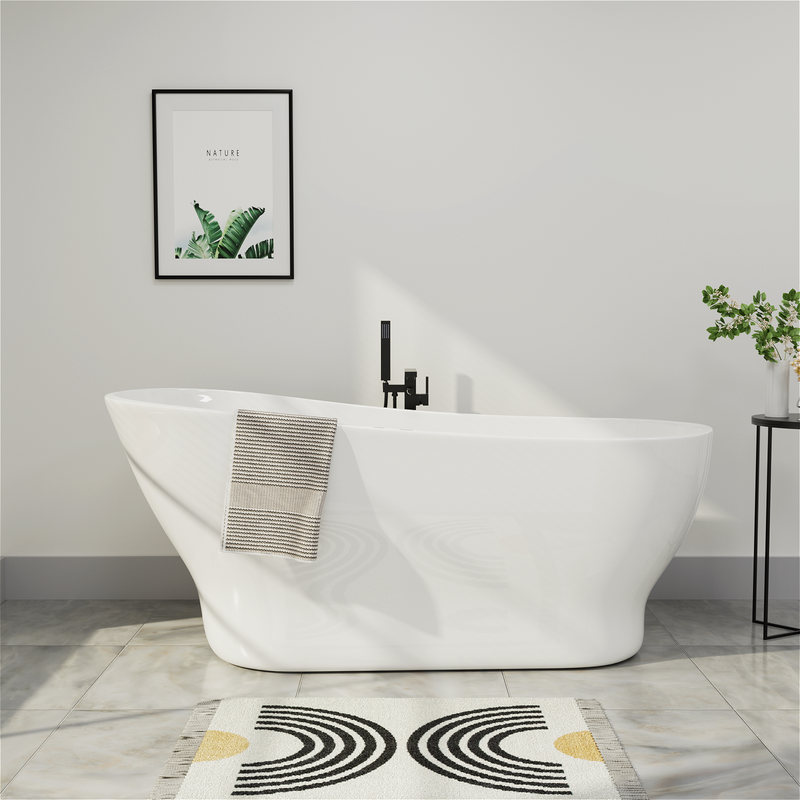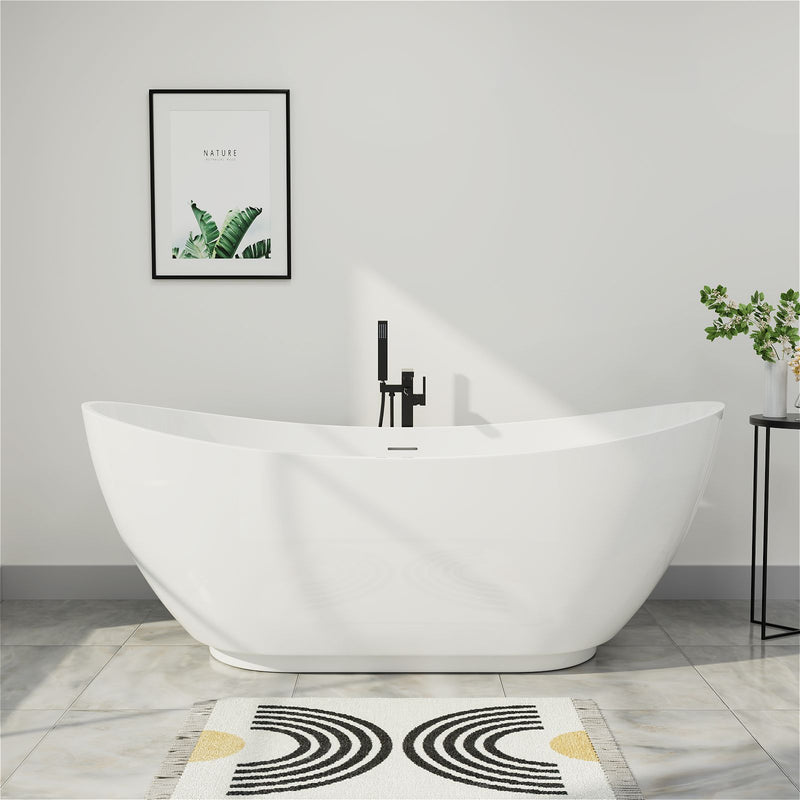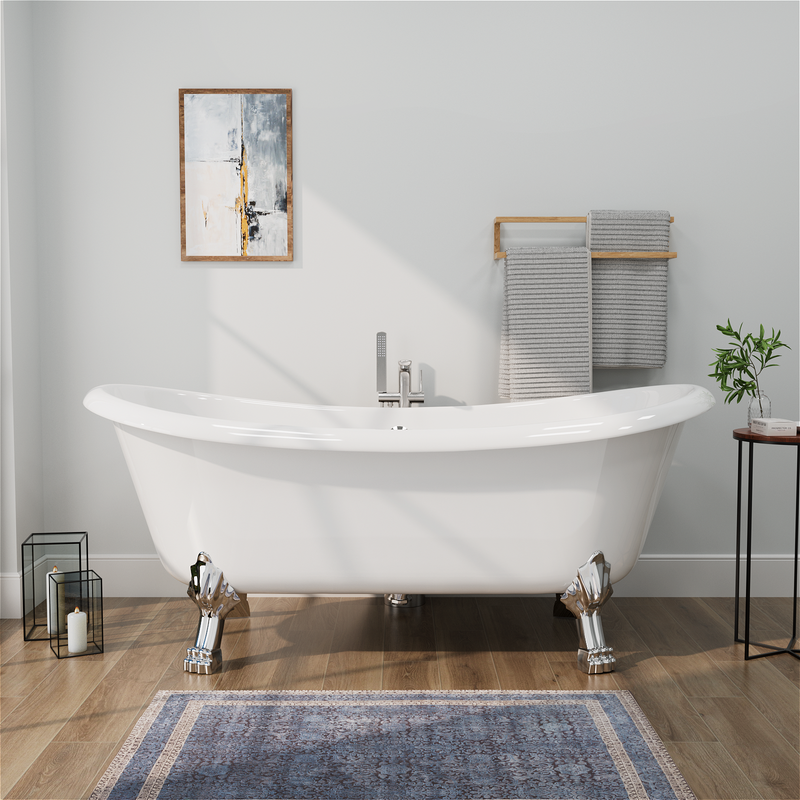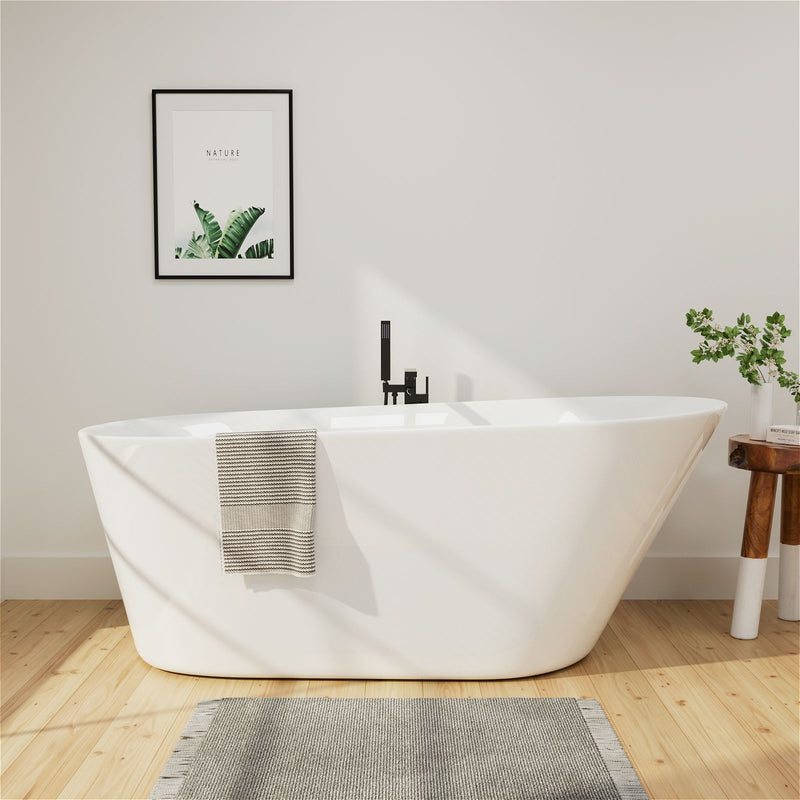What is Sealant?
Sealant is usually made of a flexible material, which has the advantage over regular caulk in that it is flexible, allowing it to fill in hard-to-reach or difficult-to-treat corners while still providing a strong bond.
Sealant is superior in terms of resistance to water, moisture, and even mold. But it also has a disadvantage, which is the application of sealant. If it is not used properly, it is easy to breed mold and cause water stains on walls and bathtubs. In addition, unlike caulk, sealant cannot be applied directly to the bathtub, otherwise it will affect the aesthetics of the bathtub.
Types of Sealants
Polyurethane Sealants
Polyurethane sealants are versatile and durable. It is a high-quality lead alternative for caulking cast iron sewage pipe joints. This one-component sealant cures quickly to form a strong and flexible waterproof and weather-resistant seal.
As a multi-purpose repair product, it can also be used to caulk the perimeter of frame openings, ductwork, wood or masonry expansion joints, and the installation of interior and exterior glass. It also has a wide range of uses in home, construction, automotive, RV, and marine environments.
Common plumbing applications for polyurethane caulks/sealants include:
- Sealing sewer lines and plumbing systems.
- Patching and caulking the inside and outside edges of frame openings, expansion joints, and glazing.
- Suitable for building construction, automotive, RV, and marine applications.
- Adheres to cast iron, masonry, wood, concrete, stone, metal, plastic, glass, aluminum, tile, vitrified porcelain, and porcelain.
100% Silicone Sealant
This 100% silicone sealant is ideal for damp exterior applications, as it has extreme weather resistance and antimicrobial properties that inhibit the growth of mold and mildew. Silicone sealants have strong adhesion, elasticity, and water resistance, making them ideal for kitchen and bathroom applications. This sealant is also UV resistant, which prevents the sealant from yellowing and extends its life in direct sunlight. Silicone sealants dry quickly and fully cure within 24 hours.
Common plumbing applications for 100% silicone:
- Seals above- and under-counter sinks to countertops.
- Tub/shower rims, doors, and drains.
- Seal gaps and seams in drains.
- Fill exterior holes caused by nails or screws.
- HVAC applications.
Why Seal a Tub?
Applying sealant to a tub is an easy way to give an old bathroom a new look, especially if your existing sealant is looking a little shabby. Not only that, but silicone bathroom sealant prevents leaks, gives it a sleek finish, and keeps water from seeping into the bottom of the tub, where it can breed mold!
Because tubs hold so much water, they're often prone to accidental overflows, as well as other occasional wear-and-tear leaks. If this water runs down the rims and bottom of the tub, it can pool on the floor, leading to ponding, rot, and eventually mold growth. This can ultimately lead to a host of problems, including health risks and repair costs.
Another reason to seal or reseal a tub is to give your bathroom a quick makeover. Old-looking sealants can reduce the visual appeal of a bathroom, so a sleek sealant is an easy way to easily update your bathroom, and it's affordable!
What to Use to Seal a Tub?
Using silicone sealant to seal a tub is arguably the most common method, and we recommend that you prepare everything you need before you begin. Here is a list of everything we feel you will need during the sealing process, which we hope will be helpful:
- Safety gloves
- Safety glasses
- Masking tape
- Safety knife
- Caulking gun
- Silicone sealant
- Silicone applicator (or round-tipped tool)
How to Seal Around a Tub?
Once you have your equipment and tools ready, you can start sealing the tub.
Step 1: Tape the Edges
The first step is to use masking tape and place it around the edge of the tub, marking where you will place the silicone.
Start taping from the back corner of the tub (the corner furthest from the bathroom door), with the tape at least 3 mm from the wall. This ensures that the silicone has a flat surface.
Step 2: Prepare the Sealant
From this point on, wear your safety gear and cut the silicone with your knife. Before attaching the silicone tip or nozzle, cut the tip as close to a 45-degree angle as possible, which will make it easier to apply. Then, simply place the silicone into your caulking gun (if you've already done this and aren't sure what a caulking gun is, it acts like a pump to squeeze the silicone out of the tube).
Step 3: Apply the Sealant
As close to the edge of the tub as possible, press the trigger of the caulking gun to apply the silicone. Use a smooth motion and steady hand, starting at the farthest corner, just as you did with the tape. We recommend following the directions in the image above, which will ensure you don't hit any of the newly applied silicone. For example, if your tub is surrounded by three walls, start at the top and apply in a C-shaped pattern. Apply the silicone to the bottom of the tub and the walls if possible.
Tip: When applying the sealant, fill the tub with water first. The weight of the water will ensure that the sealant doesn't crack when you use the tub later. This will give a more realistic effect than with an empty tub.
Step 4: Smooth the Sealant
Using a sealant applicator, a damp, rounded tool (such as a wooden spoon or a damp fingertip), smooth the edges of the sealant and angle it. This helps the sealant to drain water back into the tub, especially if it's in a shower enclosure.
This step is crucial because it ensures that the sealant doesn't trap any dirt, bacteria, or even mold behind it. The sealant can take up to 24 hours to set, so make sure that no one in the bathroom (or at least the tub) is allowed in during this time!
Once the sealant has set, you can sit back and enjoy your newly sealed tub!
How to Seal a Tub with a Large Gap?
If you've read our guide and are horrified to find that there's a large gap between the tub and the wall that's preventing you from sealing the tub, don't panic! This is an easy fix. We recommend that you remove any existing silicone or grout and reinstall (move) the tub closer to the wall. This will allow you to seal the tub like normal following our step-by-step guide above.
If you can't or don't want to reinstall the tub, there are two options. The first is to seal the gap with adhesive and bonding material. Once the adhesive has dried, you can then follow the steps above to seal the tub. The second option is to use flexible caulking strips. This is a self-adhesive tape that you can cut to the desired length and gap using a safety knife. Once cut, simply peel off the backing, press the caulk strips into place, and voila!
How do I Remove Sealant?
If you're struggling with unsightly sealant, we feel it. Discolored, moldy sealant can be a burden to any bathroom. If you want to remove worn, torn, or moldy sealant, the quickest and best solution is to cut it open and pry it off with a flat-head screwdriver.
Gently cut through the old sealant with a safety knife, then scrape it off with a screwdriver until as much as possible has been removed. Rub off any remaining threads with your fingers, or use white alcohol/turpentine. Next, wipe the threads off with an old cloth to remove any remaining threads.
Tip: Be careful when performing this step, as it's easy to accidentally scratch or damage the surface of your wall or tile.
FAQs
What is the difference between caulk and silicone, and which should I use?
Caulk is a general term for sealants. For bathtubs, 100% silicone sealant is the professional recommendation because it is highly flexible and completely waterproof, creating a durable seal that can handle the constant moisture and movement in a bathroom. Silicone is superior to acrylic or latex-based caulks, which can crack and peel over time.
How long does bathtub caulk need to dry before I can use the shower?
Drying time varies by product, but as a general rule, you should wait at least 24 hours before exposing the new seal to water. Humidity and temperature can affect this time, so always check the manufacturer's instructions on the silicone tube for the specific cure time. Using the shower too soon will compromise the seal and lead to mold growth.
Can I apply new caulk over the old caulk?
No, you should never apply new caulk over old caulk. The new layer will not adhere properly to the old, contaminated surface, leading to a weak seal that will quickly fail. Always remove all old caulk completely using a caulk removal tool, utility knife, or a specialized softening gel, then clean and dry the area thoroughly before applying a fresh bead.
How do I prevent mold from growing on my bathtub caulk?
Prevention starts with proper application and maintenance. Use a mildew-resistant silicone sealant. After each shower, use a squeegee on walls and wipe the sealed edges to reduce standing moisture. Ensure your bathroom is well-ventilated by using an exhaust fan. Regularly clean the caulk line with a vinegar solution or a bathroom cleaner that does not contain harsh abrasives that can damage the seal.
How often should I re-caulk my bathtub?
A properly applied silicone sealant should last between 5 to 10 years. However, you should inspect the caulk annually for early signs of failure, such as discoloration, cracking, peeling, or gaps where the caulk has separated from the tub or wall. If you see any of these signs, it's time to re-caulk.
Why is my new caulk already peeling away from the wall or tub?
This is usually caused by improper surface preparation.
The most common reasons are:
- Moisture - the surface wasn't completely dry before application
- Residue - old caulk, soap scum, or mildew was not fully removed
- Application Error - the caulk was not tooled properly to create a solid seal against both surfaces.
What's the best tool for applying a smooth, professional-looking bead of caulk?
While you can use your finger, a caulk finishing tool or a simple plastic profiling tool designed for the job will create a much cleaner, consistent, and concave seal. Dampening your finger or tool with a bit of soapy water (for latex caulk) or isopropyl alcohol (for silicone) can help create a smooth finish without sticking.
Can I use a caulk gun to seal a bathtub?
Yes, a caulk gun is the standard and recommended tool for applying bathtub sealant. It allows for controlled, consistent pressure to lay down an even bead of silicone. For best results, cut the tip of the caulk tube at a 45-degree angle, making an opening slightly smaller than your desired bead width.





